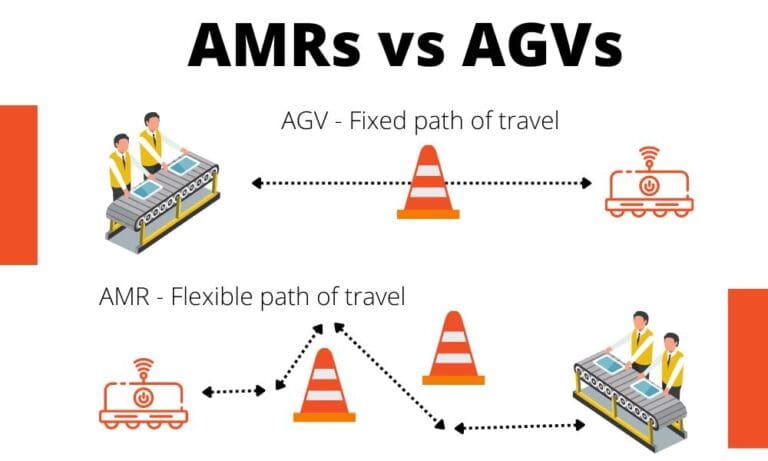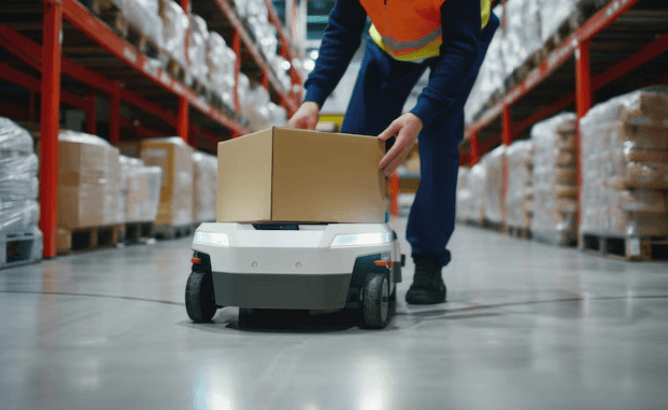Trustworthy AI for Automated Robots
Gerben Peeters
Oct 11, 2024
Have you ever wondered what it means to trust a person? When do you trust your spouse, your friend, your boss, or your colleagues?
It can be difficult to exactly pin down what we mean by “trusting” someone or something. But it is an important philosophical question, especially during our current technological (r)evolution where automated systems, and even robots, become part of our every day life.
So, have you ever wondered when you would trust a robot? Well, we have, let’s dive in.
When can you Trust a Robot?
We believe that there are two fundamental technical requirements to achieve a trustworthy robot:
A robot should be able to explain “what” they do, “how” they do it, and most importantly “why” they are doing it. Only when you are aware of why you are doing something (situational awareness) can you actually “think” about your behavior.
A robot should be able to negotiate and adapt its behavior with other robots, systems, or people in the vicinity at runtime. Only by “talking” about your own behavior and listen to others about their behavior, can you achieve shared situational awareness and trustworthy robot cooperation.

So, can we Trust Current Robots?
Not yet. Let’s take a look at the current main types of mobile robots inside warehouses:
One the extreme, you will find the Automated Guided Vehicles (AGVs), that are programmed to follow predetermined routes. The AGVs execute what they have been programmed to do from the start.
Due to this hard-coded software solution, the AGVs do not know “why” they are following a route. The reason why a route has been programmed is inside the head of the software engineer. This reason is no longer accessible, the system is not explainable, not trustworthy. That’s why these robots can often be found behind fences, if they have no safety sensors for emergency stops onboard.
On the other extreme, you will find the new generation of Autonomous Mobile Robots (AMRs), these robots have local sensors and autonomy on board to find there own way, you will just need to provide them with an end location.
The AMRs have a level of local autonomy onboard. This local autonomy can be great to pick up a slightly misplaced pallet, whereas an AGV would come to a stop if the pallet is misplaced. There still remain two big problems to achieve trustworthy AMRs. Firstly, most AMRs use black-box AI to solve their local navigation problems. This black-box approach lacks explainability, disabling trustworthiness. Secondly, AMRs currently act as egocentric robots that do no share their intended behavior in an understandable manner. So, they either cannot explain (black-box AI), cannot understand (software decisions inside the head of the engineer, similar to the AGVs), or cannot intelligently communicate their own behavior.

How can we build Trustworthy Mobile Robots?
The software stack of mobile robots needs a paradigm shift.
We need to fetch the knowledge regarding robot behavior and intentions from inside the head of the software engineers and put it right into the software stack of the robots. This knowledge transfer can be made using Symbolic AI, which is 100% explainable, understandable, and robust.
Mappalink uses symbolic AI to enable robots to “think” and “talk” about their behavior, such that they can become trustworthy team players. Practically speaking, we build dynamic semantic maps (i.e. human-and-robot understandable databases of changing environments), reasoning engines that use our maps (to think), and the interfaces to integrate (talk) our solution on the traffic control systems of our clients.
Why are Trustworthy Robots Crucial in Warehouses?
Automation has become a necessity inside the warehousing, e-commerce, and logistics markets.
Many supply chain companies are currently struggling to fill in their vacancies, a problem that will only grow in Europe, giving its aging demographics. Many more warehouses are being built each year, due to our love for e-commerce. Robots need to bridge this gap.
But, warehouses are dynamic environments where conditions change rapidly. Robots must navigate obstacles, collaborate with other robots, and adjust to shifting layouts. If a robot malfunctions or its behavior is unclear, the result can be costly downtime or even safety hazards. In fact, unexplainable downtime is a significant barrier preventing warehouses from scaling their automation efforts.
That’s why we help building trustworthy robots so our clients can eliminate robot downtime and enable robot scalability and flexibility, in any complex environment without hidden costs or human intervention.
Conclusion
Automation and robotisation are becoming a necessity. But, we should be able to trust these systems and robots. That’s why we need trustworthy AI for automated robots.

We build towards a future where every system can explain and change it’s behavior at runtime, in an trustworthy manner.
